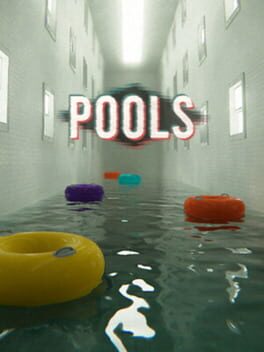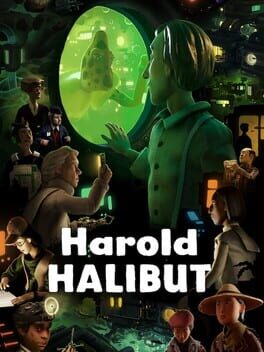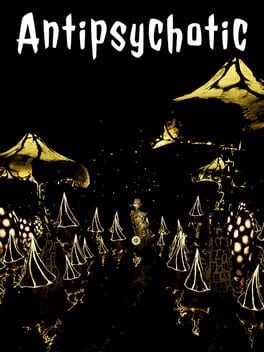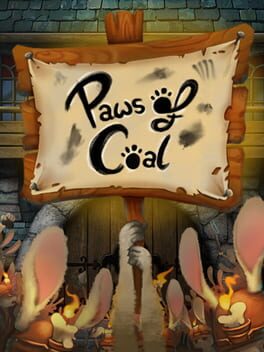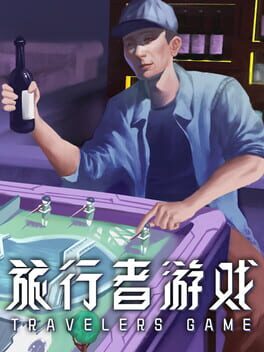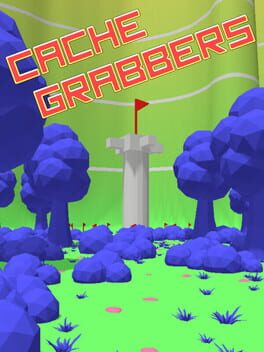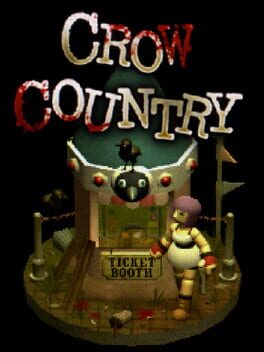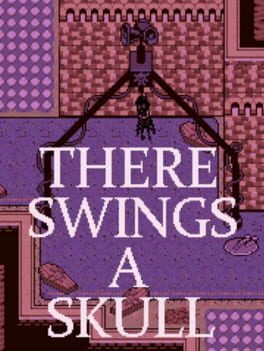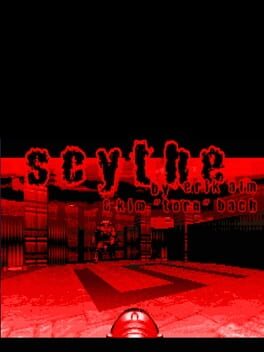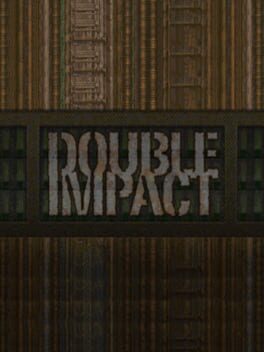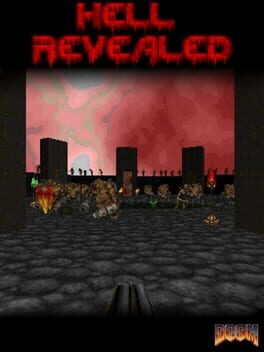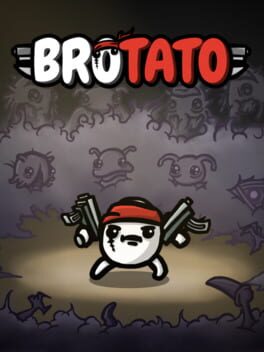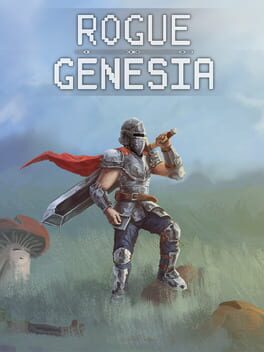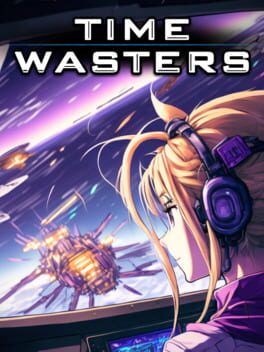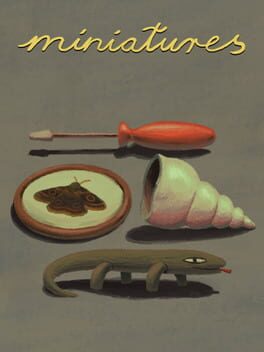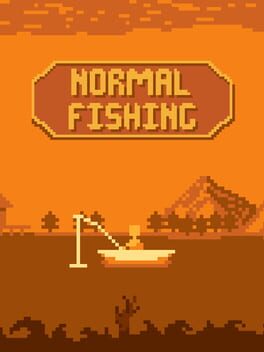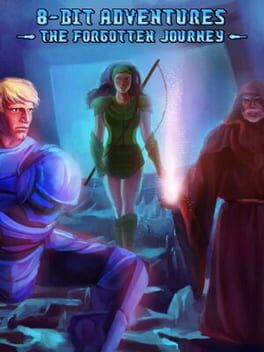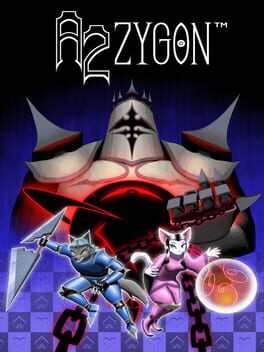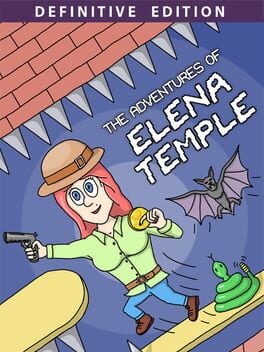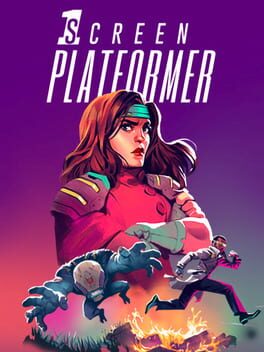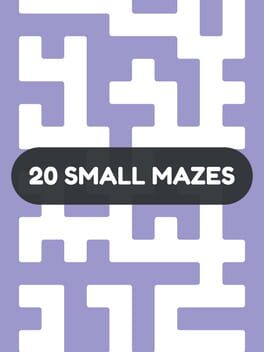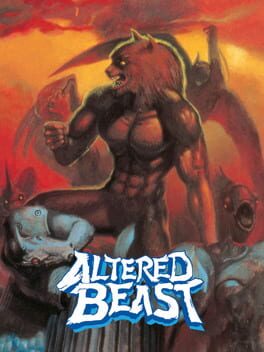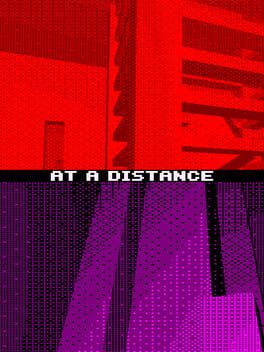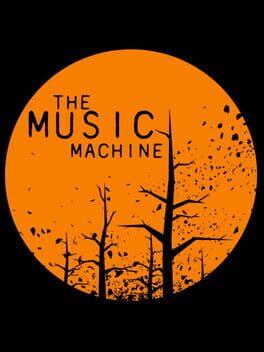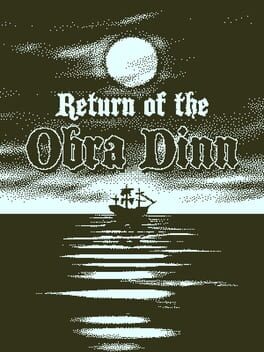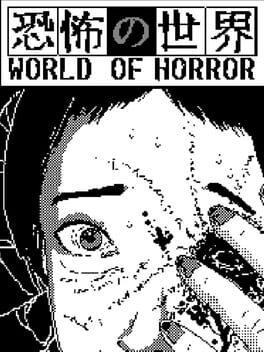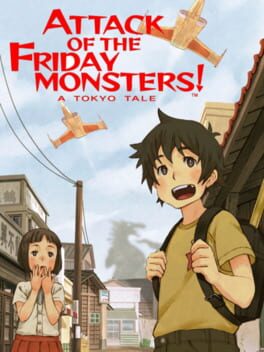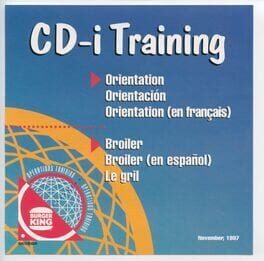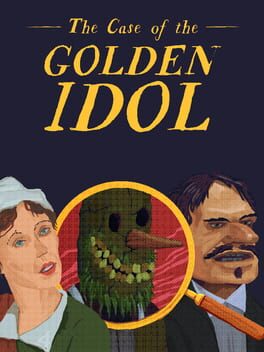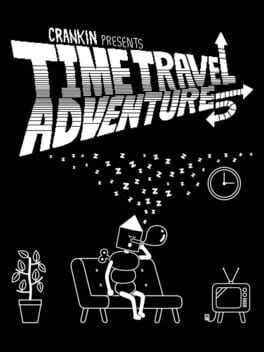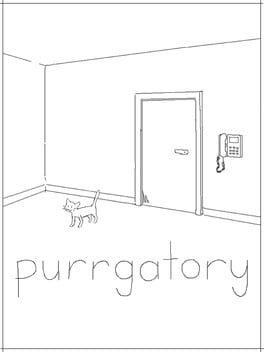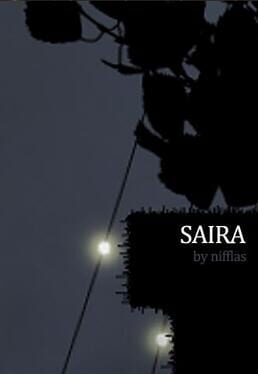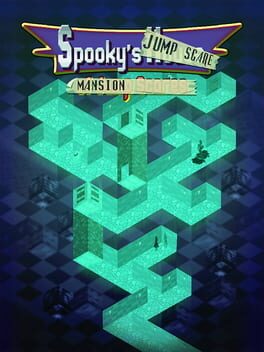JoeSchmoe
BACKER
197 reviews liked by JoeSchmoe
Grid
2019
It's a decent and visually stunning simcade racer, but it's kind of barebones and simple compared to what's become standard for racing games. No real campaign or progression other than a list of events and no customization other than paint jobs. The series has great potential but there's no real reason at the moment to play Grid over the dozens of other racing games available.
Ashes 2063 feels like a long lost Build Engine shooter that pays loving homage to Mad Max. The shooting feels great, the level design feels solid - but perhaps what's most surprising is the care and attention to world building and story. This isn't just a good total conversion mod for Doom, this is one of the best Retro FPS titles period.
Wizordum
2023
I'm usually not a fan of Wolfenstein style FPS titles with no height variation, so this was quite a pleasant surprise. I think fans of modern boomer shooters might not connect as much with this title as it shares a lot of DNA with Dungeon Crawlers like Wizardry or Might and Magic. As such it's a slower experience, more focused on exploration and atmosphere than all out carnage. It does what it sets out to quite nicely though, and the level design is honestly superb. The flat plane stuff is clearly just a homage thing because these levels are surprisingly vertical, with you often opening up spaces below or above you.
All in all a solid game with great art, and if you're into what its doing it's a no brainer.
All in all a solid game with great art, and if you're into what its doing it's a no brainer.
Herald of Havoc
2022
Genuinely one of the best Boomer Shooters out there. It doesn't look like much, but it has some of the best combat encounters I've experienced in a commercial shooter. It honestly feels like an escaped Doom wad running on Quake tech.
If you've played Doom Wads: Imagine a more refined version of Hell Revealed/Kama Sutra era slaughter mixed with the flow state and convenience of modern Erik Alm/Skillsaw inspired wads.
If you're not in the Doom Wad scene: Imagine Quake meets Serious Sam.
If you've played Doom Wads: Imagine a more refined version of Hell Revealed/Kama Sutra era slaughter mixed with the flow state and convenience of modern Erik Alm/Skillsaw inspired wads.
If you're not in the Doom Wad scene: Imagine Quake meets Serious Sam.
V Rising
2022
Oh hey this is in 1.0 so I can complain about it now.
I am a survivalcraft sicko, I've played so many of these games that it's probably a DSM-V diagnostic, so believe me when I say this one isn't too great.
Once the novelty of this being a top-down survivalcraft game wears off you're stuck with what's definitely one of the weaker entries to this genre.
Progression is a very boring and binary upwards climb where you do an endless cycle of kill boss > yoink blueprints > craft upwards > hit wall > kill boss > ad nauseaum. If you want variety well, too bad. It's hold melee and cast spells on cooldown forever. This game is somehow rinsed in the variety front by Terraria, a 13 year old game also centered around crafting and bossing.
Despite offering the option for PvE, V Rising is a PvP game at its core so the combat is incredibly simple and feels very MOBA-esque to facilitate it. Fine for PvP if that's yer thing, but for PvE it makes the game feel miserable and repetitive since bosses don't bring much to the table.
Perhaps more egregiously, the topdown angle brings with it the same issue that lots of Diablo-likes/CRPGs with it also have: There's not much impact to combat, and with the heavy health bars everything feels weightless and tedious.
There are a few mechanics that I hoped would get fixed up for 1.0 but haven't at all.
Sun damage is as boring as it sounds; if you're in the light too long your health PLUMMETS even with mist braziers around, as there's more sun than shadow.
Blood type seems cool at first but only having access to one at a time and needing to constantly scout out refills or better blood leaves the entire mechanic feeling like a sanguine game of cat and mouse.
And crafting timers... Eesh. So, this review has a lot of cuts in it because many potential gripes are somewhat mitigated by how customizable the difficulty is. It's pointless of me to whinge about some resources not being teleportable when there's an option to disable that mechanic, right? Of course!
But crafting timers are an annoying one because they're very deeply tied to the gameplay loop. By default they are far too long, ostensibly as a motivator for you to leave your base and go do some of the myriad tedious busywork the game expects you to do.
The option is there to shorten them, but this presents its own problem: Go too fast and you're basically cheating, try to meet the game halfway and you'll end up doing even more busywork. Lower them, and the game becomes an AFK simulator.
Not helping matters is that a lot of things, mist braziers especially, need fuel. Fuel that will eventually run out unless you keep it topped up. Again, busywork.
I saw a meme in the middle of last month that jokingly separated every single game into one of two categories: Menus (wherein engagement is defined as clicking through a UI) or parkour (wherein engagement is defined by movement or action).
I sort of agree with the underlying theory, but I'd suggest a third category: Tasks - games where the method engagement is irrelevant because what you're chasing is a daisy chain of unlocks and Get X of Y.
V Rising is tasks, and unlike similar games in its category the tasks are very linear. The cycle up above has little room for deviation, and given that bosses are automatically tracked for you there's not even much room for exploration.
There are way better games in this genre, even after VR hit 1.0 it's still a mess. Project Zomboid is in early access and it runs rings upon rings around it while still hitting many of the same notes. Hell, even Palworld is a better choice.
I am a survivalcraft sicko, I've played so many of these games that it's probably a DSM-V diagnostic, so believe me when I say this one isn't too great.
Once the novelty of this being a top-down survivalcraft game wears off you're stuck with what's definitely one of the weaker entries to this genre.
Progression is a very boring and binary upwards climb where you do an endless cycle of kill boss > yoink blueprints > craft upwards > hit wall > kill boss > ad nauseaum. If you want variety well, too bad. It's hold melee and cast spells on cooldown forever. This game is somehow rinsed in the variety front by Terraria, a 13 year old game also centered around crafting and bossing.
Despite offering the option for PvE, V Rising is a PvP game at its core so the combat is incredibly simple and feels very MOBA-esque to facilitate it. Fine for PvP if that's yer thing, but for PvE it makes the game feel miserable and repetitive since bosses don't bring much to the table.
Perhaps more egregiously, the topdown angle brings with it the same issue that lots of Diablo-likes/CRPGs with it also have: There's not much impact to combat, and with the heavy health bars everything feels weightless and tedious.
There are a few mechanics that I hoped would get fixed up for 1.0 but haven't at all.
Sun damage is as boring as it sounds; if you're in the light too long your health PLUMMETS even with mist braziers around, as there's more sun than shadow.
Blood type seems cool at first but only having access to one at a time and needing to constantly scout out refills or better blood leaves the entire mechanic feeling like a sanguine game of cat and mouse.
And crafting timers... Eesh. So, this review has a lot of cuts in it because many potential gripes are somewhat mitigated by how customizable the difficulty is. It's pointless of me to whinge about some resources not being teleportable when there's an option to disable that mechanic, right? Of course!
But crafting timers are an annoying one because they're very deeply tied to the gameplay loop. By default they are far too long, ostensibly as a motivator for you to leave your base and go do some of the myriad tedious busywork the game expects you to do.
The option is there to shorten them, but this presents its own problem: Go too fast and you're basically cheating, try to meet the game halfway and you'll end up doing even more busywork. Lower them, and the game becomes an AFK simulator.
Not helping matters is that a lot of things, mist braziers especially, need fuel. Fuel that will eventually run out unless you keep it topped up. Again, busywork.
I saw a meme in the middle of last month that jokingly separated every single game into one of two categories: Menus (wherein engagement is defined as clicking through a UI) or parkour (wherein engagement is defined by movement or action).
I sort of agree with the underlying theory, but I'd suggest a third category: Tasks - games where the method engagement is irrelevant because what you're chasing is a daisy chain of unlocks and Get X of Y.
V Rising is tasks, and unlike similar games in its category the tasks are very linear. The cycle up above has little room for deviation, and given that bosses are automatically tracked for you there's not even much room for exploration.
There are way better games in this genre, even after VR hit 1.0 it's still a mess. Project Zomboid is in early access and it runs rings upon rings around it while still hitting many of the same notes. Hell, even Palworld is a better choice.
Going Under
2020
hey. so this game is pretty cool. its like a satire of trendy start-up culture or whatever and ngl its sometimes a lil cringe and wont age well but thats okay. i know roguelikes are poppin but thats a big ask upfront sometimes. i gotta put in alot of work before i even know if the game sucks or not lol. im a renaissance man, you gotta court the yalp. anyway i kinda like this “series of mini runs” approach cuz the investment to payoff ratio is a bit more consistent and thats just like….. better
speaking of better, going under is set up in a very non-egghead way. instead of crunching numbers, combat focuses on a more “chaos baller” style of engagement. things are exploding, youre grabbing chairs and keyboards, victory is determined by how much you can go wit the flow, think on your feet. most of the skills make more things explode, or give you command of the explosions, or make people date you. i thrive in chaos, i love to go hyatt (she makes that noise cuz its like zelda) and i too hate capitalism and love spongebob
anyway games pr sick
see you later gamer dweebz xoxo
speaking of better, going under is set up in a very non-egghead way. instead of crunching numbers, combat focuses on a more “chaos baller” style of engagement. things are exploding, youre grabbing chairs and keyboards, victory is determined by how much you can go wit the flow, think on your feet. most of the skills make more things explode, or give you command of the explosions, or make people date you. i thrive in chaos, i love to go hyatt (she makes that noise cuz its like zelda) and i too hate capitalism and love spongebob
anyway games pr sick
see you later gamer dweebz xoxo
NieR Re[in]carnation
2021
Pools
2024
Pools, at least large public pools like the ones evoked by POOLS, are designed to be communal spaces. They are meant to be places of life and sound. In real life and the game, being alone when exploring a pool and its surrounding facilities can feel otherworldly. That isn’t necessarily an unsettling thing. While that is pretty explicitly what POOLS is trying to evoke, for me it manages to be almost meditative.
The best visual representation of this has always been, for me, the work of Leanne Shapton. Now an artist and writer, Shapton was a competitive swimmer for the majority of her youth. In her memoir, Swimming Studies, Shapton intercuts text with various pieces of art. The most memorable to me are the pages of simple geometric renderings of different pools across the world that Shapton has visited. The dark shapes of the pools are contrasted by a stark white surrounding, with nothing else.
Like Shapton’s art, POOLS breaks these spaces down to the basics of dark water and muted white surroundings. But the game triggers something in me much closer to my memories. It’s a combination of the visual rendering of the space, the audio of water dripping on tiles, and the ability to wander at my own pace. There are some rooms in POOLS that feel almost directly lifted from my brain like I’m wandering into memories. It’s not the unsettling experience the game is intended to be for most players, but something more personal and just as enthralling.
The best visual representation of this has always been, for me, the work of Leanne Shapton. Now an artist and writer, Shapton was a competitive swimmer for the majority of her youth. In her memoir, Swimming Studies, Shapton intercuts text with various pieces of art. The most memorable to me are the pages of simple geometric renderings of different pools across the world that Shapton has visited. The dark shapes of the pools are contrasted by a stark white surrounding, with nothing else.
Like Shapton’s art, POOLS breaks these spaces down to the basics of dark water and muted white surroundings. But the game triggers something in me much closer to my memories. It’s a combination of the visual rendering of the space, the audio of water dripping on tiles, and the ability to wander at my own pace. There are some rooms in POOLS that feel almost directly lifted from my brain like I’m wandering into memories. It’s not the unsettling experience the game is intended to be for most players, but something more personal and just as enthralling.
Sucker for Love: Date to Die For is a magnificent sequel to First Date (both developed by Akabaka). It refines what worked in its predecessor while adding new twists and turns to both the horror and romance aspects of the game. The result is more terrifying, more swoon-worthy, and more balanced, a game that accomplishes its goals in style. A tighter focus on love and a more expansive sense of dread means that Date to Die For will have your heart racing from start to finish.
Harold Halibut
2024
Harold Halibut has been a long-time coming. The first game from developer Slow Bros. took 14 years to develop, owed entirely to its handcrafted claymation art style. It’s a striking visual style, but the characters that inhabit the claymation world are never given as much care as the painstaking manner in which they’re rendered.
39 lists liked by JoeSchmoe
by LordDarias |
20 Games
by PeaceFlyGod |
191 Games
by LS197 |
244 Games
by Nategasm |
57 Games
by kuehlschrank |
81 Games
by MendelPalace |
231 Games
by Onilux |
70 Games
by waverly |
25 Games
by Detchibe |
25 Games
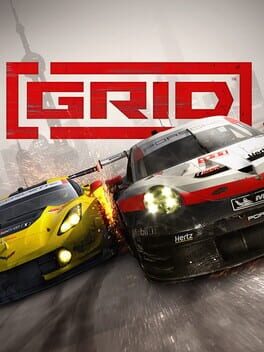
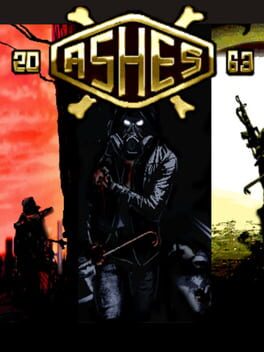
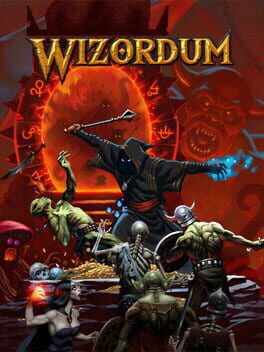

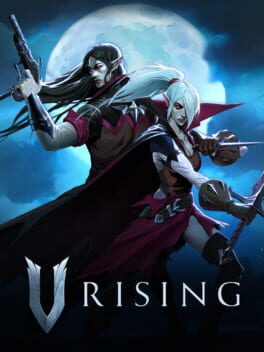
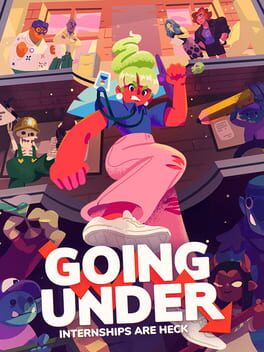
![NieR Re[in]carnation](https://images.igdb.com/igdb/image/upload/t_cover_big/co7bm4.jpg)
